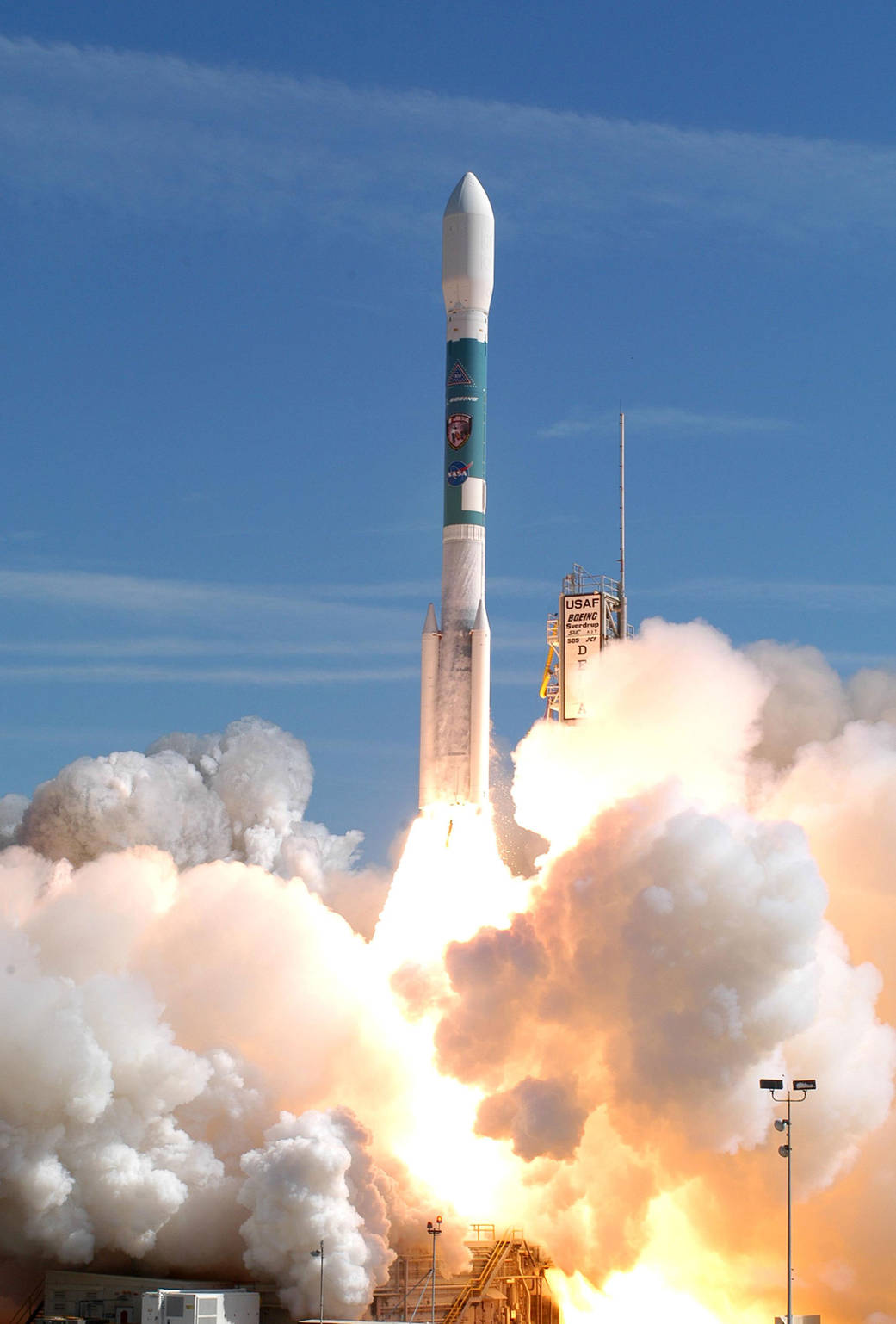A Boeing Delta II rocket, left, fires its engines on Saturday, Nov. 20, sending NASA’s Swift satellite into orbit from the Cape Canaveral Air Force Station in Florida. The satellite will pinpoint the location of distant yet fleeting explosions (artist’s concept at right) that appear to signal the births of black holes.
Swift is designed to solve the 35-year-old mystery of the origin of gamma-ray bursts, which scientists think are the birth cries of black holes. Each gamma-ray burst is a short-lived event, lasting only a few milliseconds to a few minutes, never to appear again. They occur several times daily somewhere in the universe, and Swift, with a suite of three main instruments, should detect several weekly.Credit: NASA/Kennedy Space Center
1 min read



























